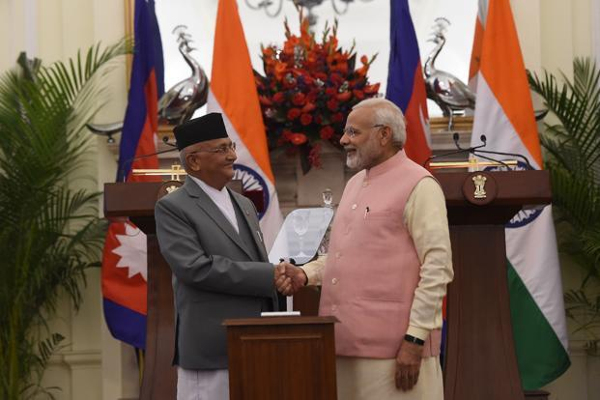Prime Minister Narendra Modi and his Nepalese counterpart K P Sharma Oli will “switch on” the Motihari-Amalekhgunj petroleum pipeline from their offices in New Delhi and Kathmandu on Tuesday. What is this project, and what is it intended to achieve?
From Barauni to Nepal
The pipeline will transport fuel from Barauni refinery in Bihar’s Begusarai district to Amalekhgunj in southeastern Nepal, situated across the border from Raxaul in East Champaran district.
According to Birendra Goit, spokesperson of Nepal Oil corporation (NOC), the 69-km pipeline will drastically reduce the cost of transporting fuel to landlocked Nepal from India. The Amalekhgunj fuel depot will have the capacity to store up to 16,000 kilolitres of petroleum products.
Speaking in Kathmandu in July this year, India’s Ambassador to Nepal Manjeev Singh Puri had described the pipeline as a “game changer for Nepal”.
“The Motihari-Amalekhgunj pipeline will help in tackling the oil storage problem in Nepal and doing away with transportation of petroleum products through tankers. It will ensure smooth, cost-effective and environment-friendly supply of petroleum products to Nepal,” a PTI report had quoted Puri as saying then.
Idea many years in making
The Motihari-Amalekhgunj pipeline project was first proposed in 1996, but progress was slow. Things began to move after Prime Minister Narendra Modi visited Kathmandu in 2014. The following year, the two governments signed an agreement to execute the project; however, political tensions, including India’s alleged “economic blockade” of Nepal, acted as roadblocks in the implementation.
In 2017, state-owned Indian Oil Corporation (IOC) signed a petroleum trade agreement to supply about 1.3 million tonnes of fuel annually to Nepal with a promise to double the volume by 2020.
In July, the two countries successfully concluded a “testing transfer” through the oil pipeline.
Costs and benefits
The project was initially estimated to cost Rs 275 crore, of which India was to bear Rs 200 crore. Subsequently, the NOC said the total project cost had escalated to almost Rs 325 crore.
“Commercial operation of the cross-border fuel project will bring down fuel price by at least one rupee per litre,” Sushil Bhattarai, NOC Deputy Executive Director, was quoted by PTI as saying.
Source: IE
Image Courtesy: Mint
You may also like
-
Trade Connect E-platform For Exports Is Single Window, Fast, Accessible And Transformational: Shri Piyush Goyal
-
Dot Simplifies Approval Processes For Telecom Licenses And Wireless Equipment
-
Coal Production and Supply Trends on Positive Trajectory
-
Union Minister To Release Booklets On Promotion Of Indigenous Species & Conservation Of States Fishes
-
2nd India-Japan Finance Dialogue held in Tokyo on 6th September, 2024
